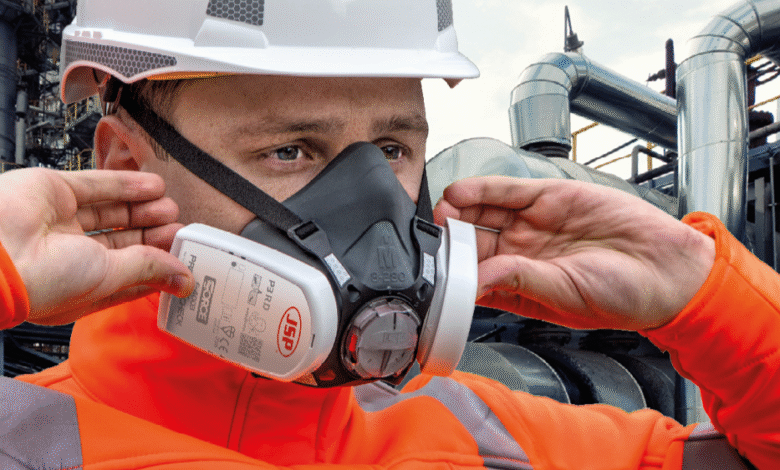From Paper to Platform: Why Mask Fit Testing Data Belongs in Your Risk Register Software

For Australian companies in high-risk areas like construction, manufacturing, and mining, Mask Fit testing is often merely a compliance exercise without any follow-through. For businesses in these sectors, Mask Fit testing is a compliance exercise done to constrain Personal Protective Equipment (PPE) adherence to AS/NZS 1715. Test results are simply filed away or, at best, stored in a separate safety management system.
Mask Fit testing results should be actively synced to the digital Risk Register as an enterprise-wide commitment.
Companies seeking to achieve ISO 45001 or ISO 14001 standards, or report on Environmental, Social, and Governance (ESG) factors ought to look beyond the integration of spreadsheet safety records. Innovation and integration of safety processes are what set companies apart. Risk Register software is less of a compliance tool and more of a digital health register to capture frontline health data for enterprise-wide risk management.
Mask Fit Testing is More Than Just a Safety Compliance Step
Most companies in the workplace health and safety (WHS) space administer Mask Fit testing as part of the onboarding or annual processes. However, the fact an employee fails a Mask Fit test is more than just an issue with Personal Protective Equipment (PPE). It is a warning signal.
In these situations, a Mask Fit Result that is failed or barely passes may mean that there might be:
– Excessive exposure to airborne contaminants
– Poor quality respirators that don’t fit, or mismatched respirators
– Very high task-based respiratory risk activities like grinding, cutting, or chemical mixing
– Missing PPE maintenance, training, or even gaps in other training
– Poor substitution, isolation, or even ventilation controls
And still, many of the businesses don’t do anything with those signals, leaving them stuck in paper forms or in the safety manager’s inbox. Used correctly, Risk Register software can turn that single data point into deep organizational insight.
Fitting Fit Test Failures into Leaning Indicators
Modern risk registers focus on tracking shifts in risk, rather than just listing the risks. This is where integrating Mask Fit testing data becomes uniquely valuable. Most organizations don’t even use the data to trigger actions.
By using failed tests or barely any passes as risk indicators, businesses are able to:
– Auto-create a new risk entry under “Respiratory Hazard Exposure”
– Link the failed test to a specific location, task, or shift
– Create workflows for retesting, engineering controls, or PPE procurement review
– Escalate continual risks to WHS leadership or internal audit processes
Instead of just responding to a possible safety concern, your system is now actively tracking where there is an increase in respiratory risk, and warning you of the upward trend.
Aligning Mask Fit Test Data With ISO 45001 and ESG
If your organization holds an ISO 45001 certification, or is working towards certification, Mask Fit testing is also risk management. Using Risk Register software, however, allows you to extend beyond meeting baseline compliance and work towards compliance with active risk management.
For example,
In your risk reports, Mask Fit testing failure trends could be tracked as a leading WHS indicator.
Under the respirator-related risk, you could identify control measures (ventilation, substitution, and task rotation) you plan to implement.
Close out WHS corrective actions with real testing results as evidence.
From an ESG perspective, tracked fit testing data in your risk register can be used to demonstrate the “S” of ESG to your stakeholders—a commitment to social equity as it relates to the protection of your workforce, proof of acquisition of effective PPE, and management of airborne hazard inequity among job roles.
Your Risk Register Should Be a Living System—Not a Static List
Many Australian workplaces are left with Risk Registers that are static, and obsolete, Word, or Excel documents. These documents do not account for real world change, as is the case with Mask Fit testing. This is a perfect example of why they must be you must develop dynamic, cloud-based Risk Register software.
A Centralised System Can
Connect with health & safety software (or upload test data)
Generate automated alerts when fit test patterns decline
Identify discrepancies between departments or locations
Provide live updates for leadership and boards
This is not about doing things digitally for convenience. It’s about showing live data that’s crucial to risk managers and operations to save lives and to stay compliant.
Making Mask Fit Testing Actionable in Real-Time
Picture this: in a quarterly Mask Fit testing session, the results show that 3 out of 20 workers in a certain unit did not pass their quantitative test. Instead of waiting weeks for reports, your Risk Register software would automatically:
Flag a respiratory hazard risk for that work area
Assign a task for review to the OHS manager
Link similar prior incidents
Alert your compliance officer for escalation
This is how risk management in real time should work—with no paperwork to bury it, and it should be traceable and actionable.
Final Thoughts
Mask Fit testing should not be a compliance process that is shadowed. When integrated with modern Risk Register software, it becomes a view of how well your controls work, what evolving hazards exist, and how prepared your business is to protect its people.
In Australia in 2025, ignoring respiratory risk has operational, reputational, and regulatory implications. Companies not incorporating real-life testing into their digital risk systems are operating in a vacuum.
Bring Mask Fit testing out of the filing cabinet and into the center of your risk strategy.



